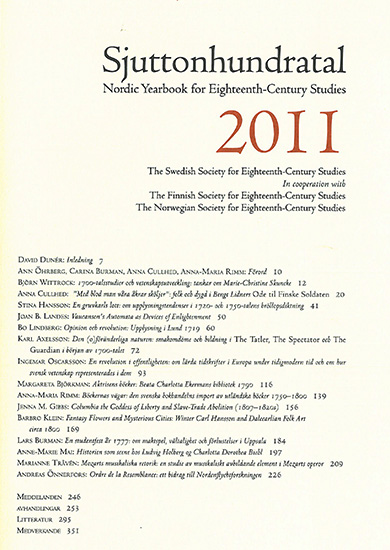Vaucanson’s Automata as Devices of Enlightenment
DOI:
https://doi.org/10.7557/4.2394Keywords:
Vaucanson, automata, mechanics, bodyAbstract
Residing at the interstices of high and low culture, pleasure and utility, wonder and technique, Vaucanson's automata belonged to what historian Michael R. Lynn refers to as ‘a growing web of interconnections between Enlightenment, science, and commerce in Parisian urban culture'. While the wider public attraction to automata during the eighteenth-century has been noted, it is also necessary to address the nature of this appeal, which is derived from the automata's simulation of the workings of human and animal bodies. Vaucanson was one of a number of astonishingly brilliant eighteenth-century mechanicians, who attempted to design material bodies capable of artificially replicating life. Their ingenious machines were indeed devices of Enlightenment, that is, philosophically animated experimental objects. The aim of these devices was to approximate what contemporaries like Diderot referred to as a ‘sentient being' with a particular spatial and dynamic organization. Over time, then, automata makers were challenged to imitate not just the body's mechanics but also the workings of the senses, to capture emotion as well as motion.









